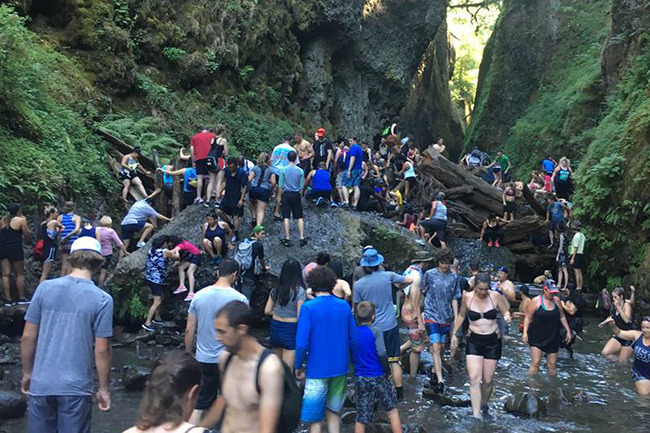This article originally appeared in the Salem Statesman-Journal.
This summer, congestion in the Columbia Gorge captured the state’s attention. What used to be secret waterfalls and quiet communities now seems to be filled with people. But where many see challenges and threats, I see opportunity to step back and get things right for generations to come.
From 2009–2015, the Portland metro area grew by 110,000 people. Many of those people moved to the area because of the lifestyle provided by the Gorge, coast and Mt. Hood.
At the same time, Oregon tourism has dramatically grown and Portland is often the portal. When you take a growing metropolis that serves as a tourism launch pad and add a world-class, accessible natural wonder a mere 20 miles away, it’s easy to see how congestion happens.
Most locations would be helpless to do anything; but the Gorge is different. The Columbia River Gorge National Scenic Area is a nationally designated area that manages Oregon’s and Washington’s Columbia Gorge as one entity.
Residential development is carefully managed and limited on both sides of the river. Rare plants and animals are monitored and protected uniformly in the Gorge. Recreation should also be considered more holistically.
Ten percent of the Gorge’s recreation areas hosts 80 percent of the people. Tourists, as well as locals, rarely venture beyond what they know because of confusion with fees, trail distances and conditions and safety. As a result, most people stick with the familiar and congestion builds. But there are ways to address congestion:
- Address hot spots. Places like Vista House, Multnomah Falls, Oneonta Gorge and Eagle Creek need relief. Hikers, bikers and other Gorge lovers should be directed to less-used but equally beautiful areas. Creating permits to limit daily usage may be inevitable in some of these places.
- Improve connectivity. The Gorge is a haven for hiking, but most trails don’t connect to other trails or communities. Regional support is growing around the Gorge Towns to Trails vision, an effort to build a 200-mile trail system around the Gorge allowing European town-to-town style trekking here in the Northwest. This would disperse hikers, encourage transit use and bring dollars to local communities.
- Designate certain areas for the wildlife. The Columbia Gorge is home to numerous endangered and threatened species, and some areas are better left to remain wild. We need to do this now before some places are lost forever.
- Think like a national park. The Gorge isn’t a national park, but parts could be managed like one in the future. One example is limiting the waterfall section of the Historic Columbia River Highway to shuttle buses, cyclists and local residents during the summer.
Our region will continue to grow, but I know Gorge congestion can be managed. We simply need the will to think and act differently now. A great national treasure is counting on it.

